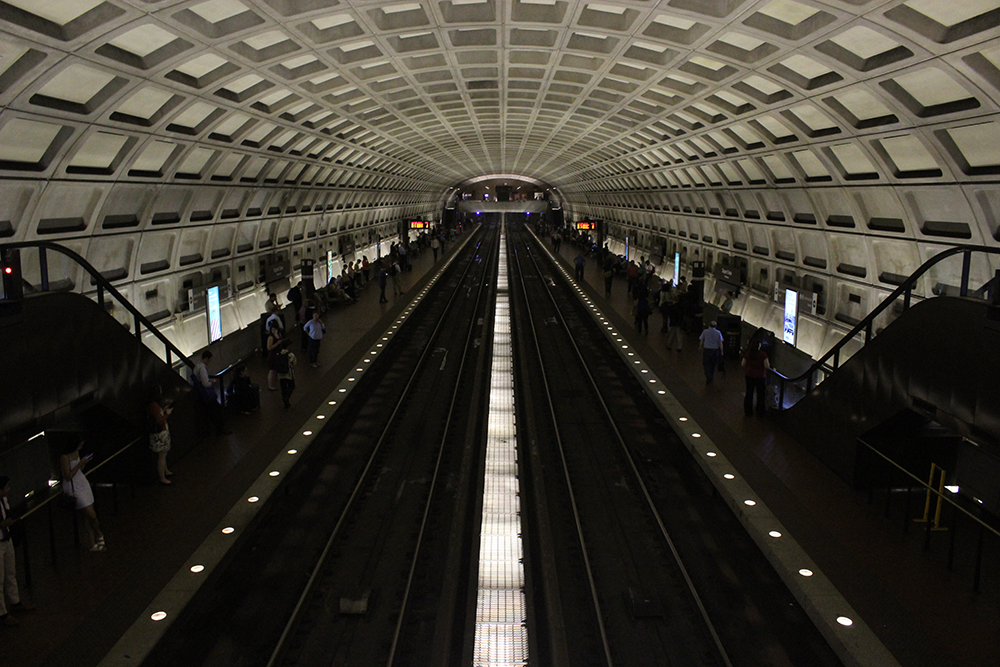The Washington Metropolitan Area Transit Authority is set to propose a $1 million program to subsidize Uber, Lyft and other ride-sharing services for late-night workers in the Washington, D.C., area by March.
The subsidized trips, which would pay for a maximum of $3 per ride, would compensate for a lack of late-night Metro services, which ran between midnight and 3 a.m. Late-night services have been suspended since 2016 because of construction, according to The Washington Post. The program, which would fund rides within Metro’s area of operation between midnight and 4 a.m., would allow up to 10 weekly rides home per worker.

The proposal comes amid a push to re-institute the Metro’s late-night hours. D.C. Mayor Muriel Bowser (D) issued a petition calling for a return of late-night services, which were set to be restored July 1. Bowser’s push for the restoration of late-night hours also comes during her Fair Shot February Initiative, which aims to make public transportation in the District more accessible.
However, the Metro board’s safety committee decided to keep the current operating hours, which close at midnight on weeknights, in a preliminary 3-1 committee vote Feb. 14.
WMATA is still deciding whether to extend operational hours, Sherri Ly, media relations manager for WMATA, wrote in an email to The Hoya. Metro’s board of directors is expected to vote on the operating hours Feb. 28, according to Ly.
Late-night Metro hours have not been instituted since 2016 because of the agency’s SafeTrack construction effort. SafeTrack is an accelerated rebuilding program that has allowed Metro to renovate its railways quickly and safely by increasing track time and extending maintenance hours into the transit agency’s late-night service hours. By combining maintenance time from weeknights, weekends and midday hours, the program finished three years’ worth of construction in one year.
SafeTrack was implemented after numerous safety lapses, including an accident at L’Enfant Plaza in 2015 which left commuters exposed to smoke for 45 minutes and resulted in the death of one rider and 91 other injuries, according to a June 2017 report by the National Aeronautics and Space Administration’s Safety Center.
After SafeTrack ended in mid-2017, Metro officials have used the extra hours to implement preventative maintenance work. The new program started in July 2017 and included trackbed cleaning, stray current testing, cable testing to avoid smoke and fire accidents and verifying the correct rail alignment among other measures. By restoring late-night hours, the Metro will lose track time, hindering track maintenance and risking the safety of riders, according to Metro general manager Paul Wiedefeld.
“We need to do what it takes to keep the system, keep the people, keep our employees safe in operating our system,” Wiedefeld said at Bowser’s Jan. 29 breakfast with the D.C. Council.
If Metro restores late-night service hours before ongoing construction is finished, the agency would face financial consequences. The Federal Transit Administration, which gives financial and technical support to local public transportation systems, warned the Metro board that they would withhold $1.6 billion in transit funding from the D.C. area if the late hours are reinstituted.
The federal funding from the FTA relies on approval from the Metrorail Safety Commission, the oversight group for the process, which must be federally certified by April 15, according to The Washington Post. Returning to the late-night hours would complicate that process because the FTA would need to take additional time to review its budget allocations to ensure that they align with the agency’s safety needs under the new hours.
Despite an improvement in track outages and on-time train performance, track fires still persist following the Metro’s maintenance program, according to Laura Mason, a manager of SafeTrack and other maintenance programs at Metro.
“In the last 18 months, we’ve completed a significant amount of work in our system,” Mason said at Bowser’s breakfast.“However, our track fires, one of our most critical types of incidents we track, has only decreased by 20 percent, indicating there is still more work to be done.”
Continuing the Metro closures harms the D.C. community, according to Bowser.
“All of us have made a substantial commitment to making sure that Metro has what it needs,” Bowser said. “Metro needs to do a little bit more to make sure that this region has what it needs to stay open.”




















